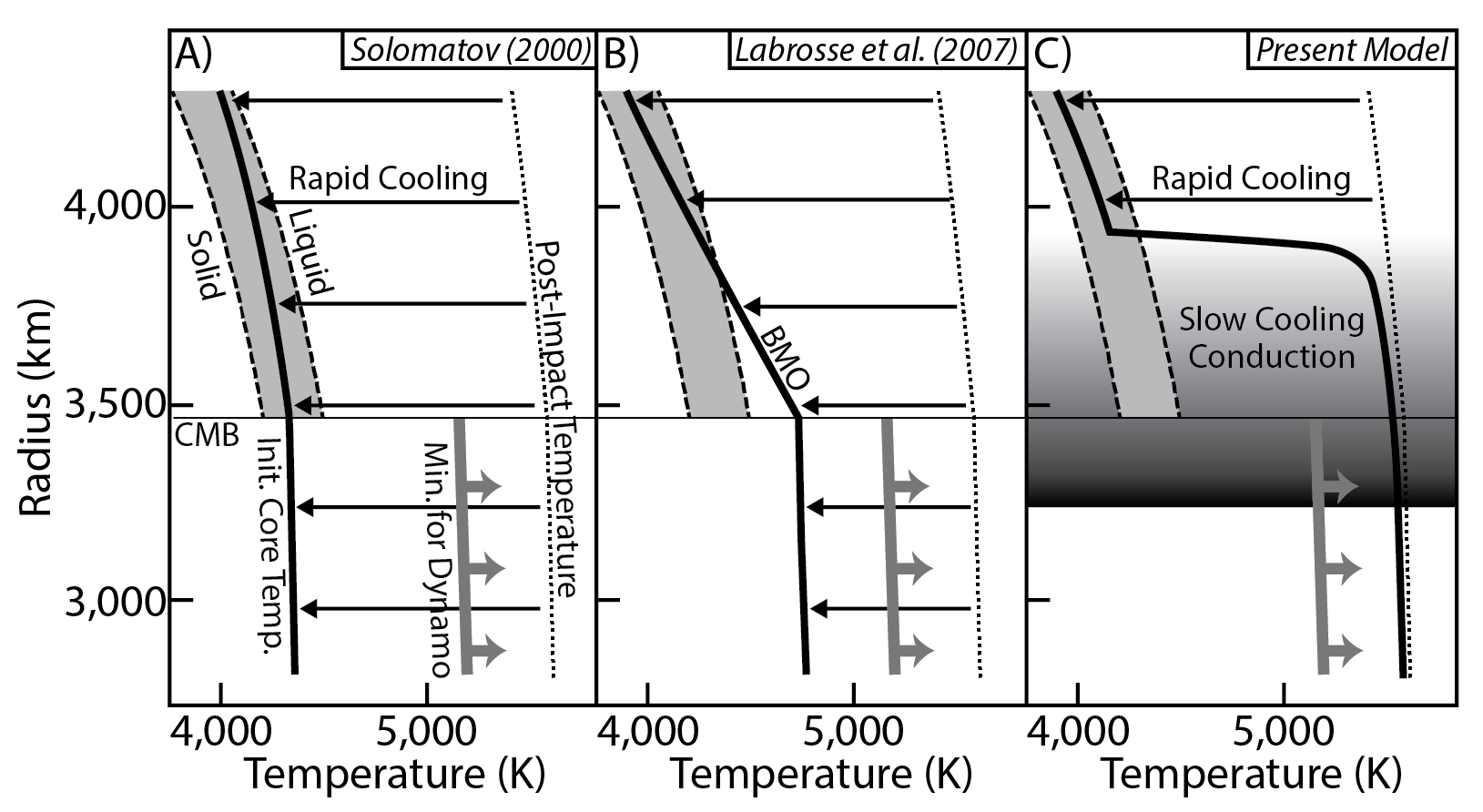AOGS · Basal Magma Ocean crystallization
Laneuville, Hernlund, Labrosse, work in progress.
I will present the latest developments of this project in the Solid Earth session of the next Asia Oceania Geoscience Society meeting, which will be held from Aug 2-7 in Singapore.
The abstract follows:
Earth’s magnetic field is thought to be sustained by dynamo action in a convecting metallic outer core since at least 3.45 Ga (Tarduno et al., 2010). Convection induces an isentropic temperature gradient that drains 13±3 TW of heat from the core by thermal conduction (de Koker et al., 2012; Pozzo et al., 2012; Gomi et al., 2013), and suggests that Earth’s core has cooled by ∼1,000 K or more since Earth’s formation (Gomi et al., 2013). However, models of Earth’s initial thermal evolution following a giant-impact predict rapid cooling to the mantle melting temperature (e.g., Solomatov, 2007).
In order to understand how the core could have retained enough heat to explain the age of the geodynamo, we relax a key assumption of the basal magma ocean model of (Labrosse et al., 2007) to allow for the possibility that the magma is stably stratified. Recent giant impact simulations suggest extensive core-mantle mixing (Saitoh and Makino, 2013), which could have produced such a large stratified magma layer at the core-mantle boundary.
In the presence of a stable density gradient, heat transfer through the basal magma ocean occurs through conduction and therefore delays heat loss from the core. Partitioning of iron in the liquid phase upon crystallization changes the density profile and triggers convection in the upper part of the basal magma ocean. Our hypothesis suggests that early core cooling is dominated by the diffusion timescale through the basal magma ocean, and predicts a delayed onset of the geodynamo (i.e, during the late Headean/early Archean). This model can therefore be falsified if the existence of a geomagnetic field can be inferred from magnetization of inclusions in Hadean zircons.
